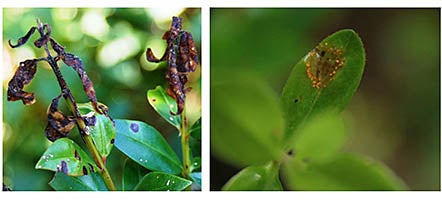Drop off your vote today.
Myrtle rust presents a serious biodiversity threat. It is a recent arrival in New Zealand, so it is hard to predict how damaging it will be.
Myrtle rust presents a serious biodiversity threat. It is a recent arrival in New Zealand, so it is hard to predict how damaging it will be.
Myrtle rust is a plant disease caused by the fungus Austropuccinia psidii. It produces powder-like spores that can be easily spread through direct contact or by the wind.
Once established on a host tree or shrub, it destroys new growth and soft tissues, eventually killing the plant.

Myrtle rust can infect hundreds of species in the plant family Myrtaceae, which in New Zealand includes such species as mānuka, pōhutukawa, rātā and kānuka.
Research shows the genus Lophomyrtus – which includes ramarama and rōhutu – is especially at risk. Based on countries where myrtle rust is more established, severe declines are possible for these plants, and others may prove susceptible in future.
Common exotic plants also at risk include: feijoa, bottlebrush, gum, guava, willow myrtle, lilly pilly (monkey apple) and brush cherry (Syzygium spp).
Look out for myrtle rust when moving, buying, planting, or working with myrtles.
Note the following guidelines:
Find out how you can plant to prevent myrtle rust.
Visit myrtlerust.org.nz for identification guides, where it has been found and how to manage infected plants.
Advice on managing myrtle rust in a plant production context is also available from NZ Plant Producers.